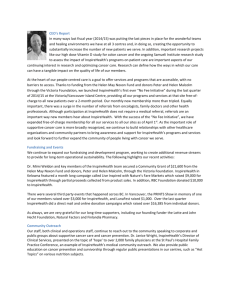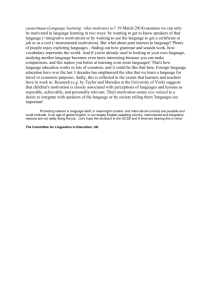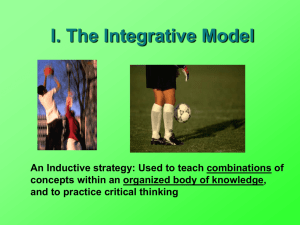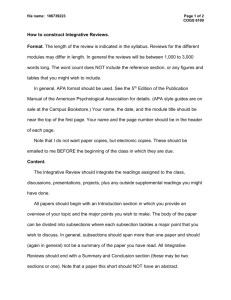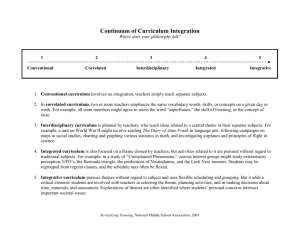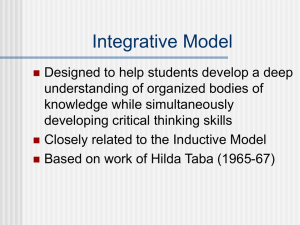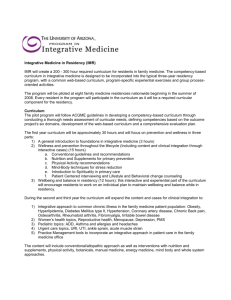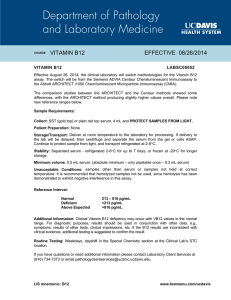Complementary and Integrative Medicine
advertisement
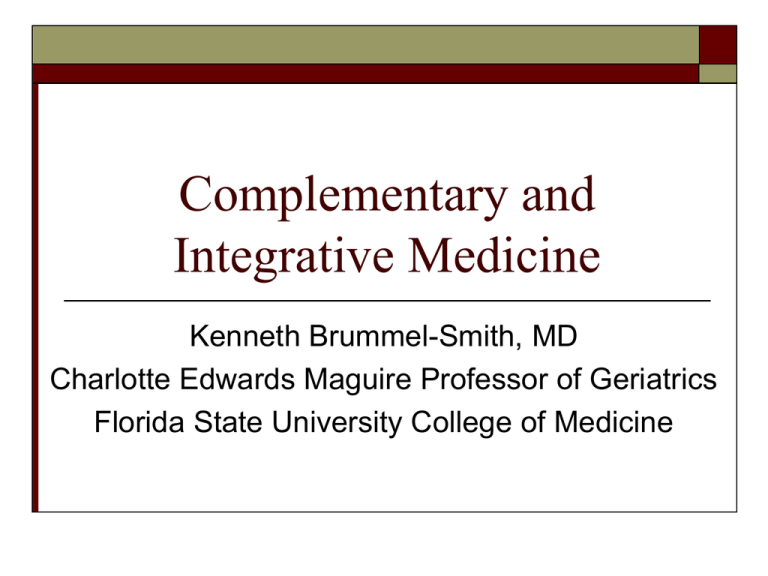
Complementary and Integrative Medicine Kenneth Brummel-Smith, MD Charlotte Edwards Maguire Professor of Geriatrics Florida State University College of Medicine Definitions Complimentary medicine Integrative medicine Medical and health care systems, practices, and products that originated outside of mainstream medicine When complimentary approaches are used in concert with mainstream medicine Holistic medicine Same as Integrative Medicine More Definitions Functional medicine Incorporates the latest in genetic science, systems biology, and understanding of how environmental and lifestyle factors influence the emergence and progression of disease. Alternative medicine The use of a non-mainstream approach in place of conventional medicine. Problems with Definitions Nutrition? Western vs. non-western medicine? “Traditional” medicine Concept of “evidence” Role of intuition? Local Resources Healing Arts Alliance TMH Family Medicine Residency http://www.healingartsalliance.org Integrative medicine clinic Archbold Hospital (Thomasville) Integrative Medicine Center My Philosophy Medical Choices, Medical Chances Objective reality – statistical probabilities Subjective reality – degrees of belief Personal benefit from chiropractors, massage therapists, HeartMath, “Wellness Formula” Medicine is not a science It is an art that uses science to inform it Surgery is not science either, it’s a craft “Evidence when available, common sense when not” Acupuncture May help: tension headache, migraine, soft tissue injuries (sprains), osteoarthritis, sciatica, low back pain, neuropathies, postoperative nausea, chronic pain, stress Does not help: rheumatoid arthritis, depression, smoking cessation, tinnitus, asthma Chiropractic Many Cochrane reviews – most show slight evidence of benefit Low back pain, migraine, neck pain, joint problems, whiplash May help: fibromyalgia, sciatica, TMJ Not effective for asthma, hypertension Vitamins A, D, E, K – fat-soluble, potentially can lead to overdose A – vision problems, high calcium, liver damage D – vomiting, constipation, weakness, calcification of tissues E – bleeding K – no toxicity known Vitamin D The new fad Be careful about continuous doses greater than 1000 IU Especially important for homebound people Possibly beneficial for osteoporosis, fall prevention, fracture prevention, dementia prevention Vitamin E No clear role in using supplements Unsure – claudication, cataracts No evidence of benefit – mild cognitive impairment, dementia, heart disease, May cause bleeding, increased risk of prostate cancer, worsening of respiratory symptoms in older patients, increased risk of heart failure Vitamin B B1 (thiamin), B2 (riboflavin), B3 (niacin), B5 (pantothenic acid), B6 (pyridoxine), B7 (biotin), B9 (folic acid) B12 (cyanocobalamin) B6 – may be helpful in neuropathy (small doses) B12 – old fashioned treatment. Oral just as good as injections, necessary in B12 anemia Vitamin C May be associated with lower rates of pneumonia and macular degeneration in older patients Does not appear to reduce colds, heart disease, total cancer, prostate cancer Cannibis THC Cannabinoids

